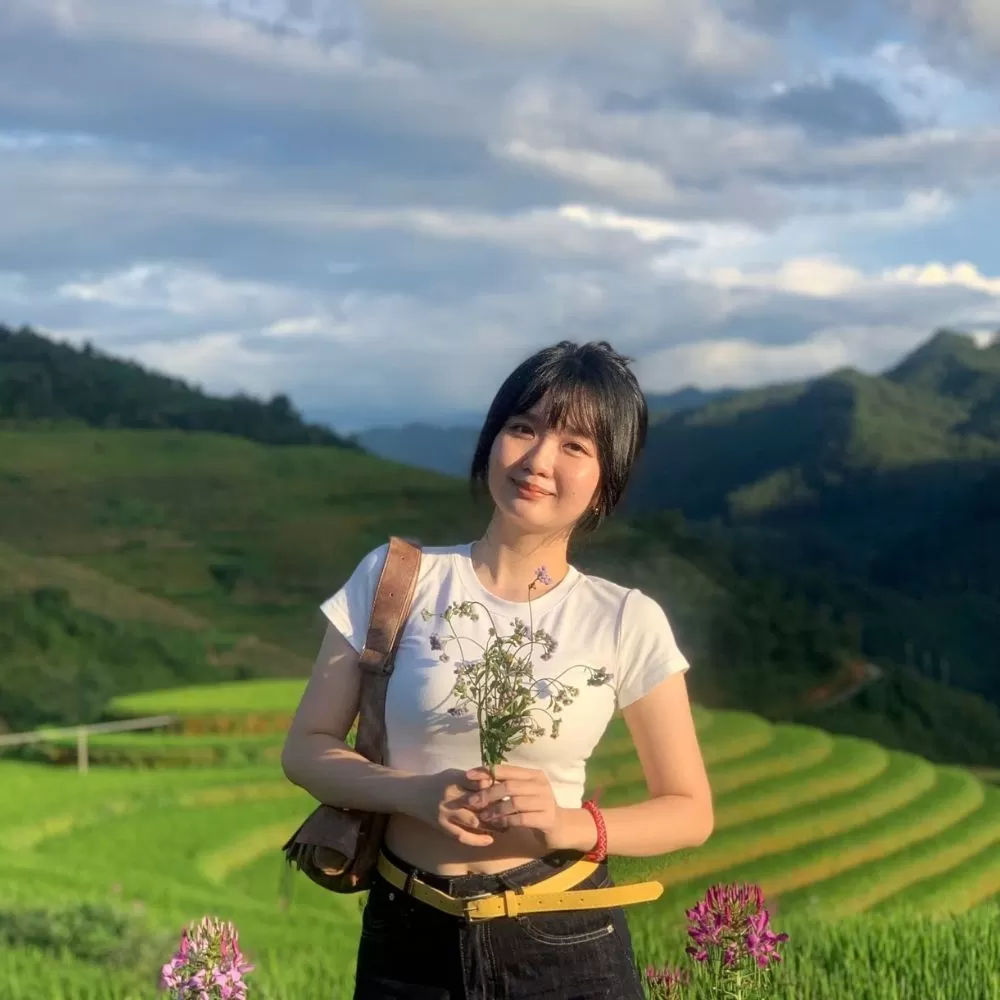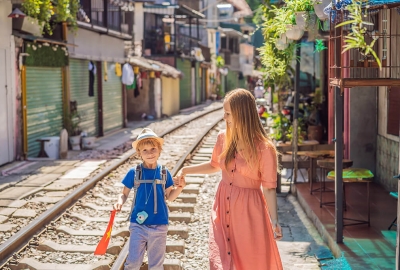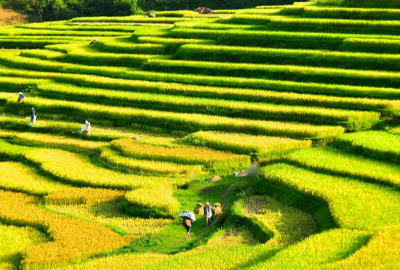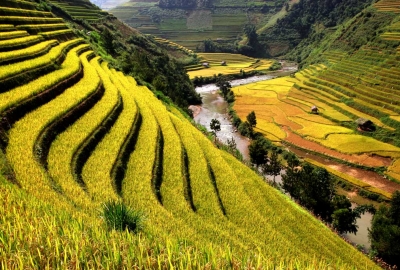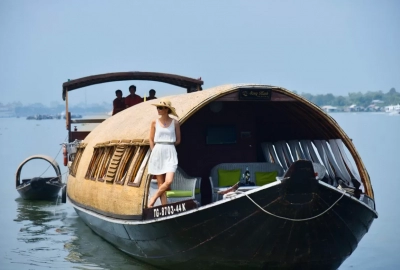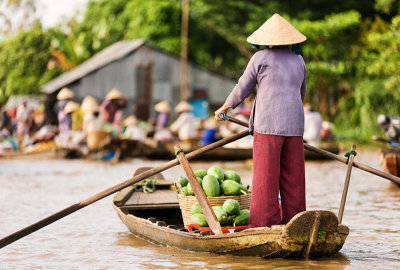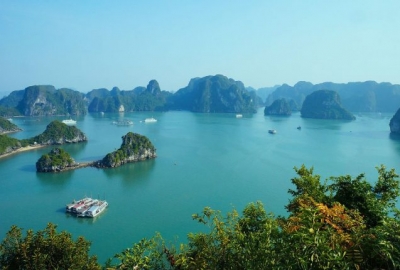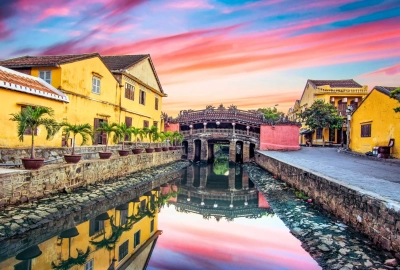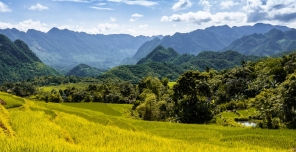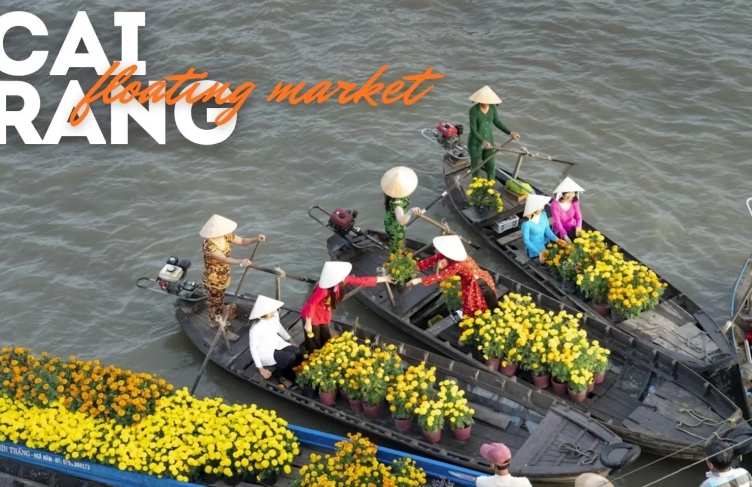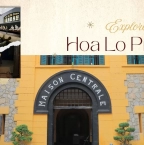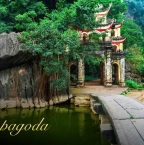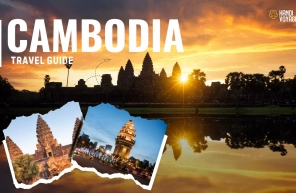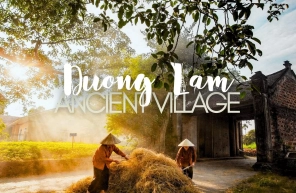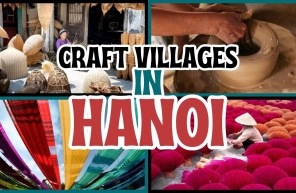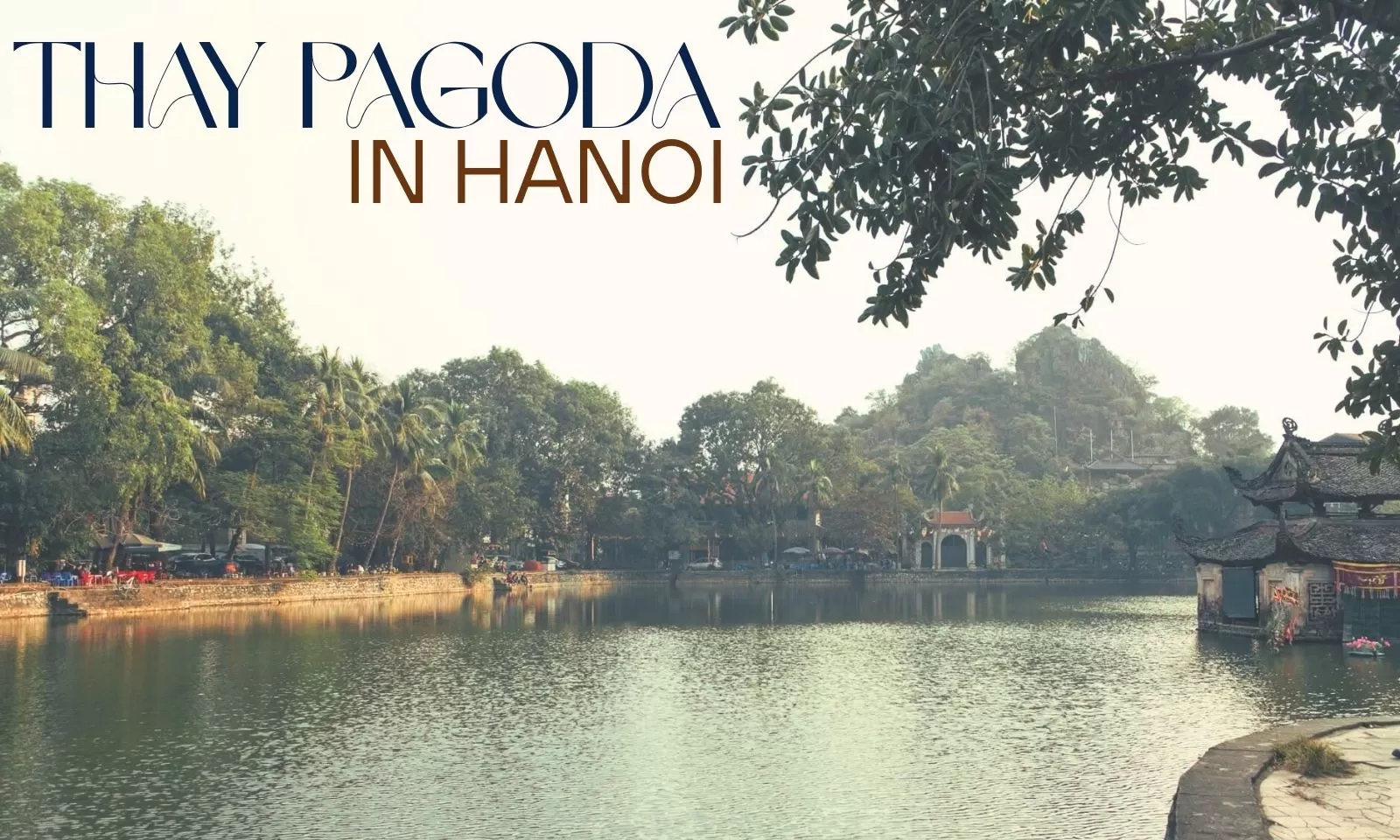
Visit Thay pagoda in Hanoi: A complete travel guide

Few places near Hanoi capture the harmony of nature and spirituality quite like Thay pagoda. With its serene lake, moss-covered stone bridges and long-standing Buddhist traditions, this sacred site has been a peaceful retreat for generations of monks and pilgrims.
In this guide, you’ll find practical tips and inspiring insights for those planning to visit Thay pagoda in Hanoi—from its historical background to transport options and what to explore nearby. Follow along to prepare for a culturally rich and rejuvenating day trip.
Table of Contents
History of Thay Pagoda
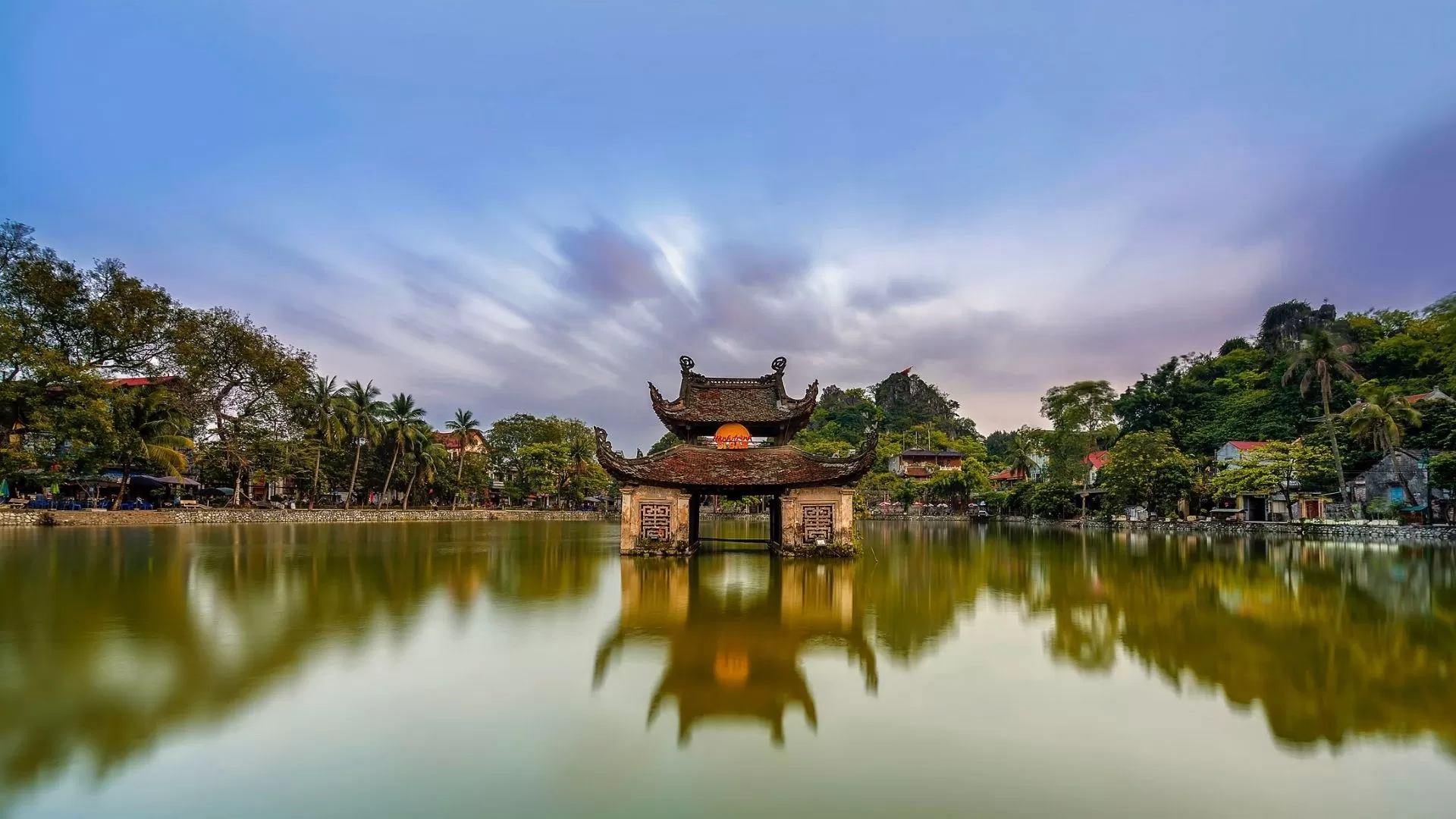
Thay Pagoda, known in Vietnamese as Chùa Thầy, was built during the Ly Dynasty in the 11th century. It was founded by the revered monk Tu Dao Hanh, a legendary figure in Vietnamese Buddhism. Not only was he known for his spiritual teachings, but he also introduced water puppetry—one of Vietnam’s most unique traditional arts.
Throughout history, Thay Pagoda in Hanoi has been regarded as both a spiritual sanctuary and a place of profound cultural significance. Nestled at the foot of Sai Son Mountain, the pagoda has long been a retreat for monks, scholars and pilgrims seeking tranquility and enlightenment. Today, it stands as one of the most iconic pagodas in Hanoi Vietnam, harmonizing nature, religion and ancient architecture.
A closer look at Thay Pagoda’s iconic sites
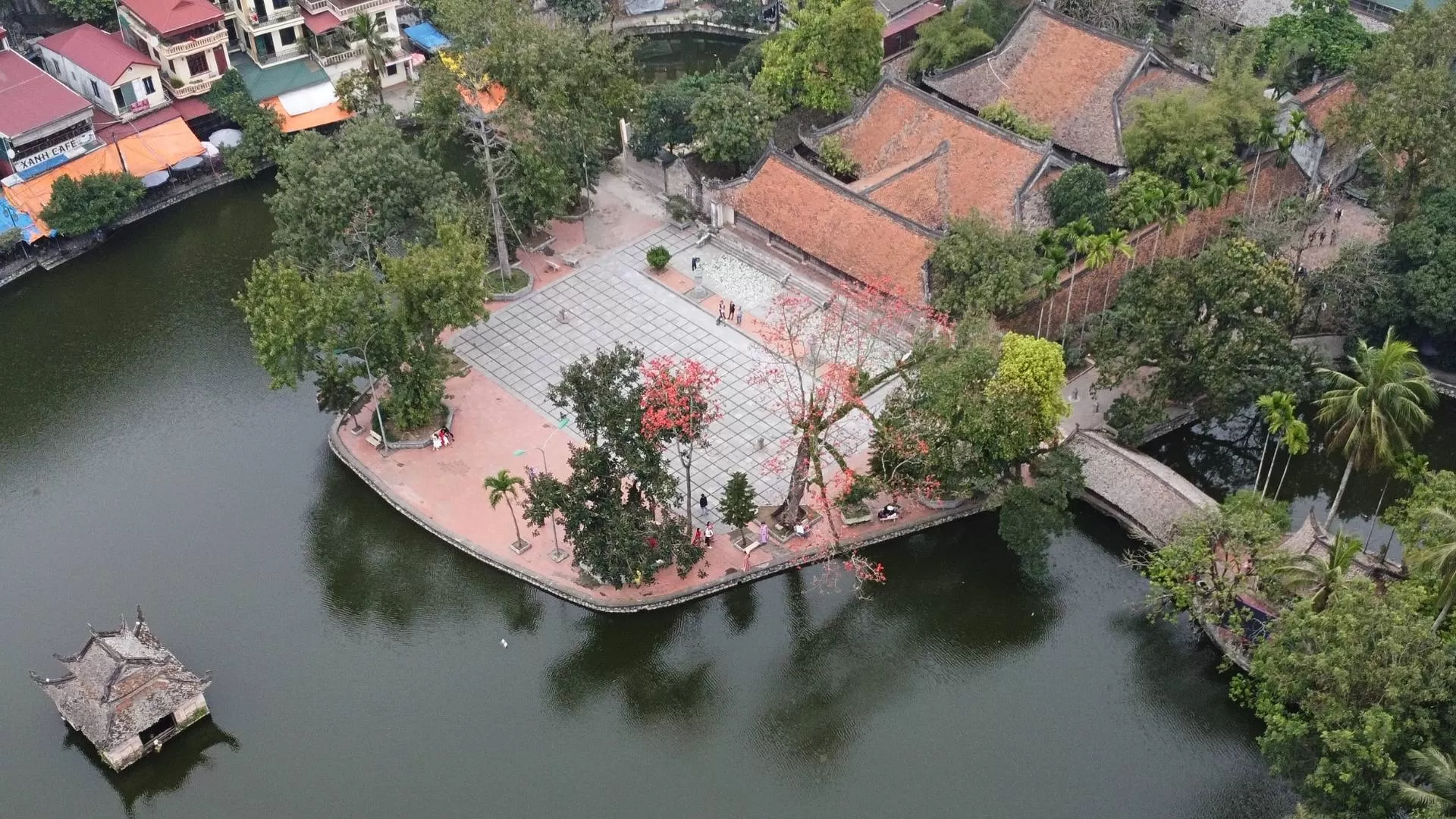
Thay Pagoda rests on dragon-shaped terrain—a sacred symbol of harmony and prosperity. In front lies Long Tri Lake, whose tiled courtyard and curving edge resemble a dragon’s jaws. At its center stands a graceful water pavilion, often seen as a radiant gem emerging from the dragon’s mouth. During festivals, this ancient stage comes alive with traditional water puppet shows tied to the legend of Monk Tu Dao Hanh.
Flanking the lake are the arched Nhat Tien Kieu and Nguyet Tien Kieu bridges, built in the “upper house, lower bridge” (“thượng gia, hạ kiều”) style. Their curves echo the whiskers of a divine dragon, symbolizing harmony between heaven and earth. Each spring, bombax ceiba flowers bloom along the lake, adding vibrant color to the timeless scene.
The three main pagodas
The pagoda complex follows a classic “Tiền Phật hậu Thánh” layout and is built in the shape of the Chinese character "Tam" (三), symbolizing harmony and balance. It comprises three aligned structures: Ha Pagoda, Trung Pagoda and Thuong Pagoda, each with distinct spiritual and architectural roles.
Ha Pagoda (Chùa Hạ)
The outermost and most accessible structure, Ha Pagoda serves as the main prayer hall where monks, pilgrims and visitors gather for worship. It is also used for chanting and dharma talks. The hall enshrines various Buddha statues, with weathered wooden beams and altars that convey a deep sense of timeless devotion.
Trung Pagoda (Chùa Trung)
Located just behind Ha Pagoda and slightly elevated, Trung Pagoda houses altars for Tam Bảo (the Triple Gem), guardian deities and celestial kings. The space exudes tranquility and is often where visitors pause to reflect or offer incense during their spiritual journey.
Thuong Pagoda (Chùa Thượng)
Tucked high on the mountainside and surrounded by dense greenery, Thuong Pagoda is said to be the site where Monk Tu Dao Hanh meditated and attained nirvana. The shrine includes statues of Amitabha Buddha, Shakyamuni and three incarnations of Tu Dao Hanh—as monk, Buddha and emperor—showing the deep integration of Buddhist and folk beliefs. The climb is steep, but the peaceful atmosphere and sweeping views are worth the effort.
Other notable sites in the complex
Tam Phu Temple
Also nestled along the mountain trail, this temple is dedicated to the Three Holy Mothers (Tam Phủ), central figures in Vietnamese folk religion. The presence of this temple within the Buddhist complex illustrates the blending of belief systems that is common in many pagodas in Hanoi Vietnam.
Bell and Drum Towers
Behind the main temples stand the bell and drum pavilions, believed to have been commissioned by Tuyên phi Đặng Thị Huệ, concubine of Lord Trịnh Sâm. These towers, modest in design, add to the sacred ambiance and are often rung during important rituals.
Mountain trail and hidden sanctuaries
Continuing up the mountainside, visitors can explore ancient spiritual sites like Cao Pagoda (originally Hiển Thụy Am), where Tu Dao Hanh first began his monastic life. Along the way, small caves such as Hang Bụt Mọc, Hang Gió and Hang Bò appear, each with its own legends.
One of the architectural marvels is One-Roof Pagoda (Chùa Một Mái), also known as Bối Am. Built into the cliffside, this tiny sanctuary has only a single roof and clings dramatically to the mountain rock, embodying simplicity and spiritual solitude.
Cac Co Cave
At the summit lies Hang Cắc Cớ, a mysterious, deep cave shrouded in legend. Locals say it contains nine levels symbolizing the nine layers of the underworld. Due to its depth and narrow descent, few dare to explore beyond the first or second tier. For many, the cave remains a symbol of the mystical and the unknown.
Thay Pagoda festival
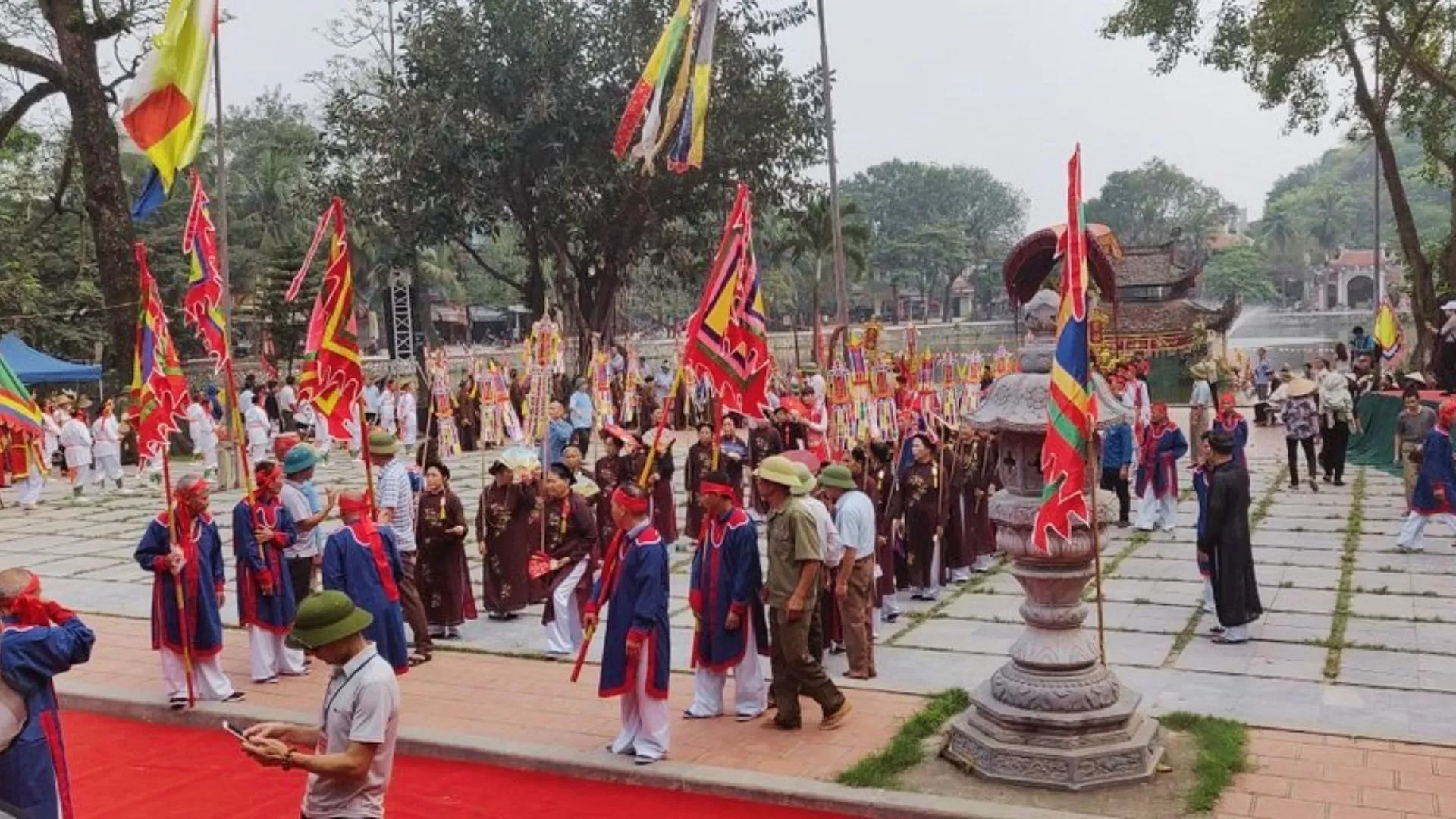
Held annually during the third lunar month, especially around the 7th day, the Thay Pagoda Festival is one of the most vibrant spiritual celebrations in northern Vietnam. The festival commemorates the life and contributions of Monk Tu Dao Hanh with ceremonial offerings, traditional music, folk games and water puppet performances.
Pilgrims from across the country flock to the site during the festival. The atmosphere is lively and spiritual at once, offering a rare chance to witness how ancient Vietnamese religious traditions come alive in modern times.
Visiting information
Opening hours: Daily from 7:00 AM to 5:00 PM
Entrance fee: 10,000 VND (~$0.5)
Best time to visit: During the dry season (November to April) for comfortable weather. Visiting during the festival (March–April) provides a unique cultural experience, though it can be crowded.
How to get there
Thay Pagoda is located in Sai Son Commune, Quoc Oai District—just about 25 kilometers from central Hanoi—making it a convenient half-day or full-day trip. Visitors can choose from several transport options:
By bus:
The most budget-friendly option is taking bus number 73, which runs from My Dinh Bus Station to Thay Pagoda. The fare is only 10,000 VND per ride and buses run every 10–20 minutes on average, making it easy to catch a suitable time.
By motorbike or private car:
For more flexibility, many travelers opt to ride their motorbike or drive. Follow Thang Long Boulevard and after passing the Sai Son overpass, take a right turn and continue for about 1 kilometer to reach the pagoda.
Parking fees: Motorbike parking costs 10,000 VND, while car parking is 30,000 VND.
Combining your visit with other sights
To make the most of your day trip, consider pairing your visit to Thay Pagoda with other nearby cultural and natural attractions. These destinations are easily accessible and complement the spiritual atmosphere of Thay Pagoda, offering a deeper glimpse into Northern Vietnam’s heritage:
Tay Phuong Pagoda: Located just 5 km away, Tay Phuong Pagoda is famous for its intricate wooden Buddha statues dating back centuries. Perched on a hilltop, it offers a peaceful, spiritual ambiance and scenic views.
Ba Vi National Park: About an hour’s drive from Thay Pagoda, this national park is a refreshing escape with cool climate, forested trails and waterfalls. You can also explore French colonial ruins hidden in the woods.
Duong Lam Ancient Village: This well-preserved village showcases traditional Northern Vietnamese architecture and rural life. Strolling its quiet lanes, you’ll find ancient houses, temples and a deeply rooted cultural charm.
At Hanoi Voyages, we offer other exciting tour packages that let you experience the best of Vietnam's beauty. CHOOSE AN IDEA and we will plan your trip together!
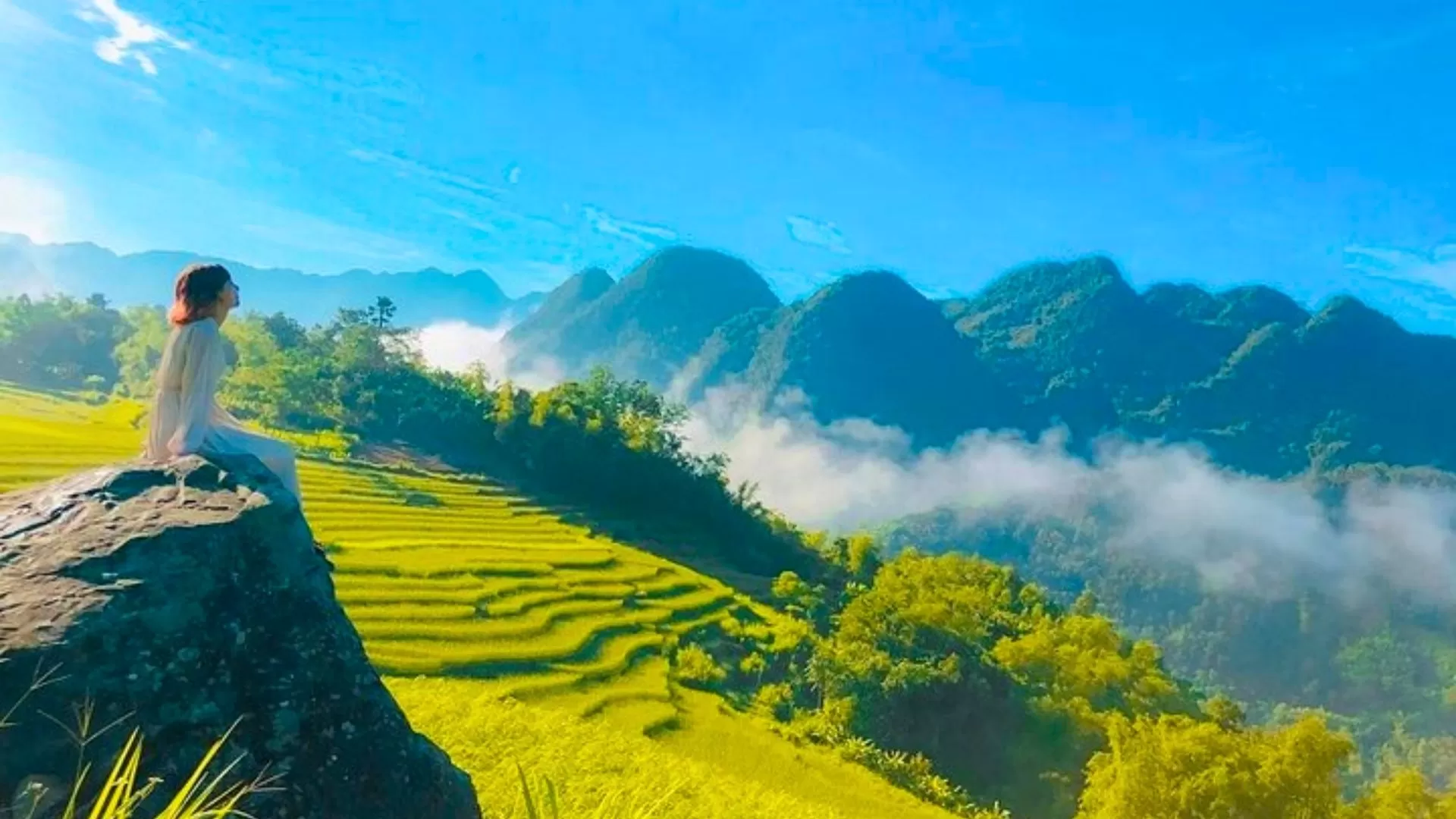 | 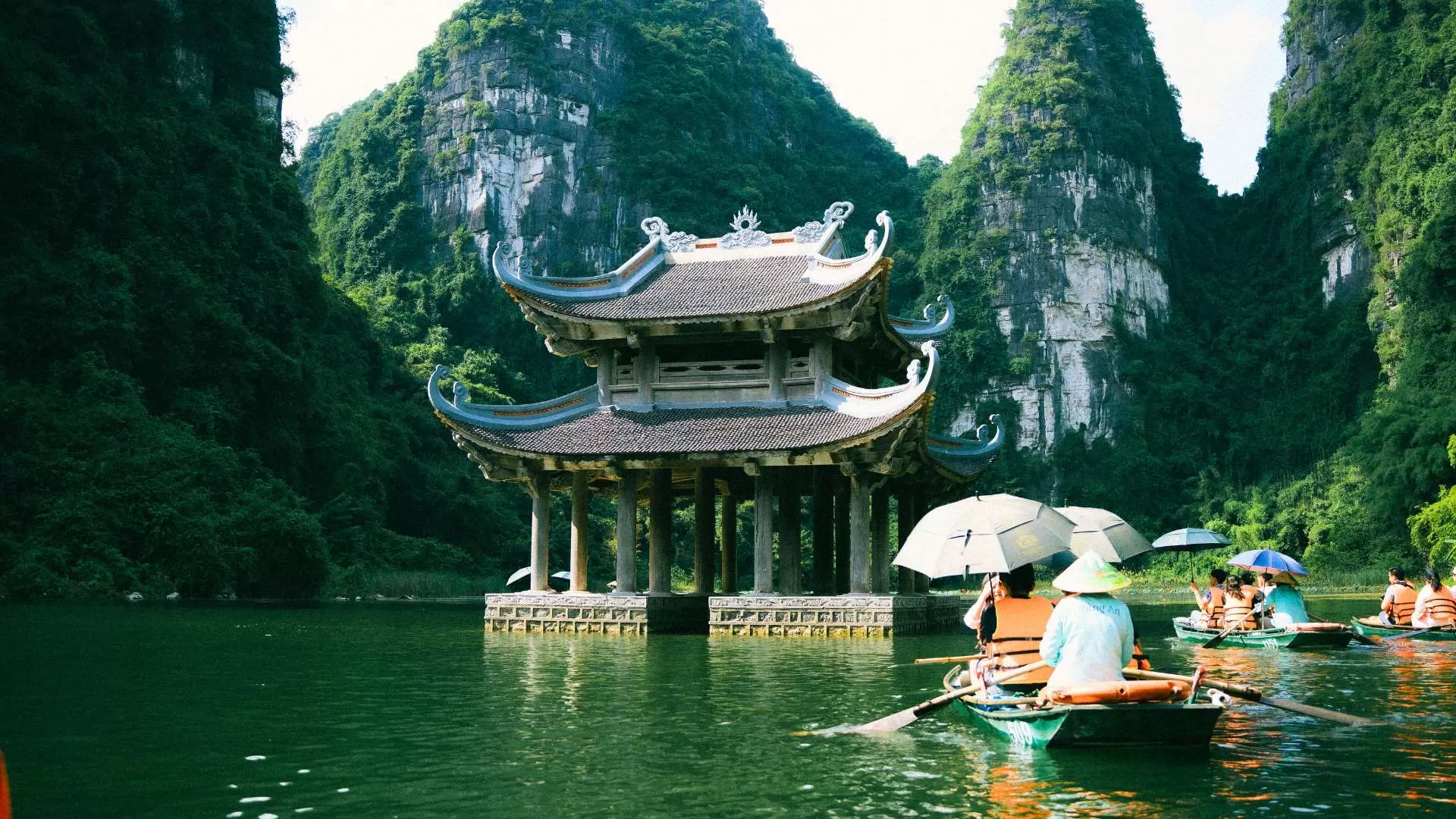 | 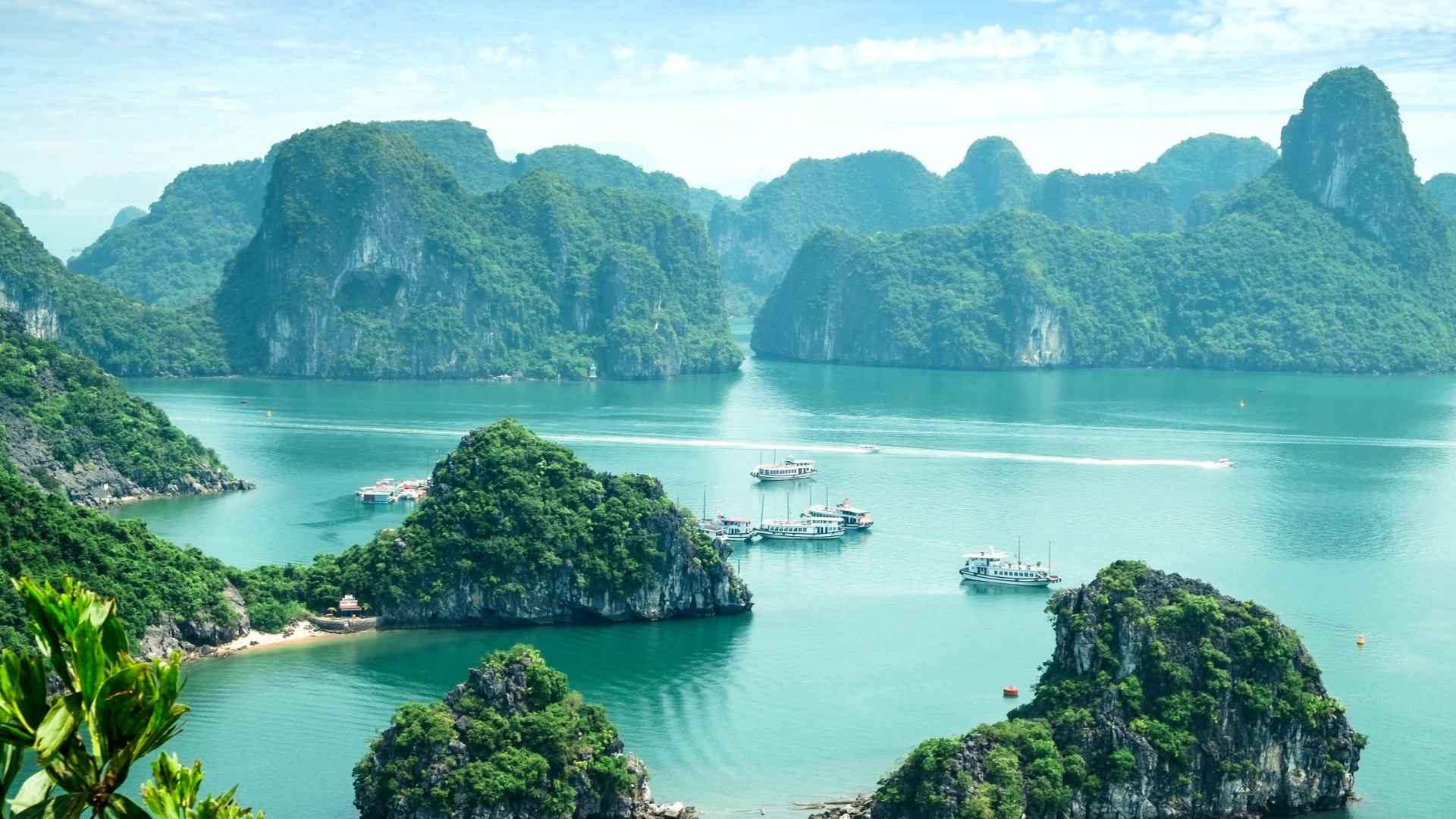 |
|---|---|---|
Discover UNESCO sites and the stunning Pu Luong Reserve. Enjoy a diverse adventure that's perfect for all ages | Explore the serene beauty of Pu Luong, Ninh Binh and Ha Long Bay on an adventure through stunning landscapes | Vietnam tour 21 days Absolutely from Hanoi to Phu Quoc island Highlight the country's beautiful and rich cultural from the peaceful North to the bustling South |
Hanoi Voyages offers tailor-made cultural journeys across Vietnam. Contact us today to create a personalized itinerary that fits your interests—spiritual, scenic, or beyond!
Travel tips for a meaningful visit
To fully appreciate your time at Thay Pagoda, a bit of preparation can go a long way. These travel tips will help you have a smooth, respectful and rewarding experience—whether you're there for spiritual insight, scenic beauty, or cultural heritage.
Start early: Arriving in the morning helps you avoid both the crowds and the heat, especially if you plan to climb up to Thuong Pagoda for panoramic views.
Bring water and snacks: There are limited food and drink options around the mountain, so packing your own water and light snacks ensures comfort during your visit.
Be mindful of etiquette: Follow local customs by dressing modestly, not pointing your feet at altars and walking behind monks during ceremonies or prayers.
A visit to Thay Pagoda in Hanoi is more than a simple sightseeing stop—it’s a peaceful journey into Vietnam’s spiritual soul. Surrounded by tranquil lakes and steeped in centuries-old legends, this historic site invites you to slow down and reflect, offering a perfect contrast to the energy of Hanoi’s city streets.
Let Hanoi Voyages help you discover Thay Pagoda and nearby cultural gems with ease. Reach out to us for a smooth, enriching day trip experience.
For more insights into Hanoi’s temples and rich cultural heritage, explore this guide:
Dream about your trip to Asia, in private
We are here to make it happen with youFREE QUOTE, WITHOUT OBLIGATION

